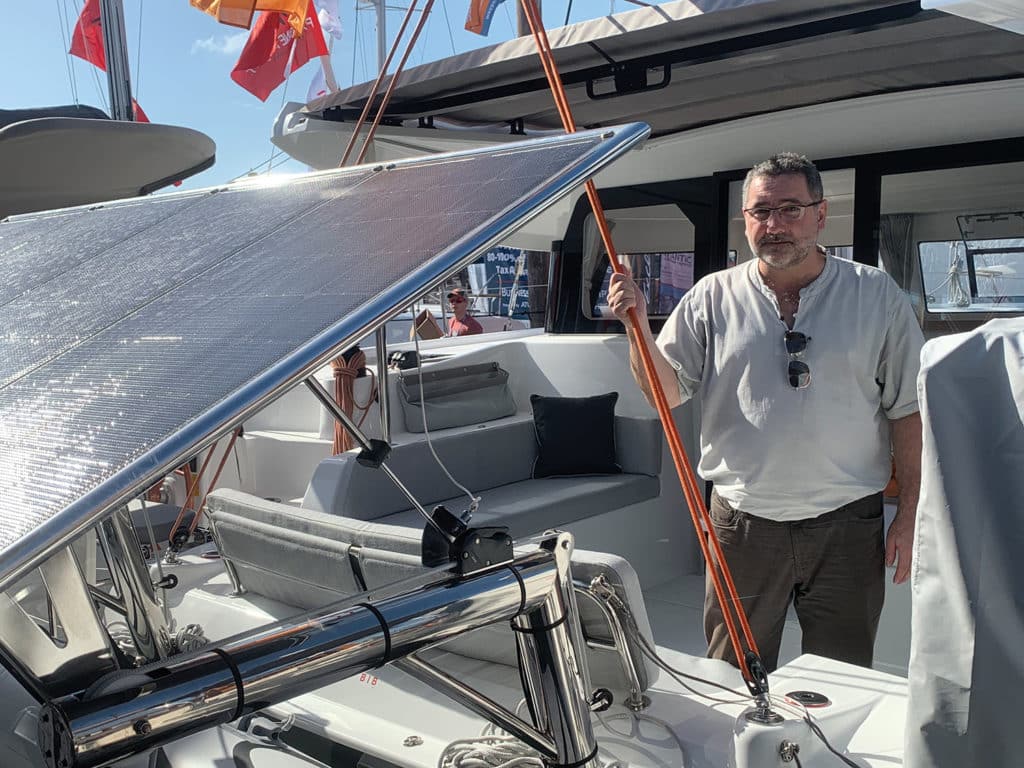
The good news? There are a lot of old boats out there.
Many have “good bones,” as they say, and often, they can be purchased for a remarkably modest price. If maintained, their hulls and decks haven’t been overly compromised by water seeping into plywood or balsa cores. Their aluminum masts remain straight and strong. Replace aging rigging, buy new sails, perhaps repower the engine, and update the electrical system and electronics, and off you go—at a fraction of the price of buying new.
The bad news? There are a lot of old boats out there. And they are really a problem.
Yards are choking on boats that won’t—or at least shouldn’t—ever see the water again. They sit with rotting interiors behind homes, an eyesore in the neighborhood. They hang year after year on moorings, in too poor shape to go sailing but preventing others from having access to the water. Most eventually will be cut to pieces and buried in landfills. But a few will break free and end up ashore, becoming an expense for homeowners or towns to deal with, or they will be left to break apart and deposit yet more plastic into the wild.
Ironically, one guy thinking a lot about this problem is Bruno Belmont, who has spent the better part of his career with Groupe Beneteau, which builds more fiberglass sailboats than anyone else on the planet. Belmont’s current title is product designer for Excess Catamarans, a brand launched by the group this past year. I caught up with him at the introduction of two new models, the Excess 11 and Excess 15, at the Miami International Boat Show in February.
The problem, Belmont says, is twofold: What to do with all the old boats to make way for new ones, and how to design new models so they can be disassembled and disposed of when their useful life has come to an end.
Modern fiberglass sailboats are built using a variety of resins and epoxies that permeate cloth fabric and coring to give it strength. Hulls, decks, bulkheads and furniture are then bonded together using exotic glues, making it difficult or impossible to then separate them. When it comes time to dispose of the boat, it’s easy enough to strip away things like the keel, winches and other hardware, but wood, fiberglass and a range of coring materials pose a much greater recycling challenge.
Belmont notes that while sailing is an incredibly green activity, building boats—at present anyway—isn’t. The solution, he says, is to pressure the chemists to come up with bonding materials that are sufficiently strong, but whose adhesion properties can be reversed when it comes time to recycle.
Already, he says, across the group, designers are trying to use more eco-friendly fabrics and woods. In that regard, he estimates they are 60 percent along the way to building a greener boat. But resins and glues? There’s a ways to go. He estimates that today, they have achieved maybe 15 percent of their goal to find greener alternatives. The problem is that boatbuilders may ask for them, but they represent a small minority when it comes to the demand for industrial chemicals used in construction worldwide.
In the meantime, the French builder is looking for other ways to follow a greener path; in fact, it’s one of a dozen or so design criteria. Bruno says one short-term goal is to build production sailboats that can be fossil-fuel independent for a minimum of three days by using more-efficient lights and appliances and relying on solar and wind for power. Down the road, he believes harnessing hydrogen looks promising.
And at home, the entire marine industry in France contributes to a fund to pay to purchase and dispose of boats that have reached the end of their usefulness, funded by a tax on every new boat sold. When a dealer takes a worn-out model in trade, some of his cost and the cost of recycling the boat is covered. Meantime, there is a pilot initiative underway to grind up old fiberglass and use the powder when making new fibers.
Still, building more eco-friendly boats is what Belmont is after. New sailors coming in to the market today are asking for greener products, he says. At present, the marine industry is perhaps 20 percent of the way to building a recyclable boat. His bet: Maybe in 10 years they’ll be there.
“If we don’t do it in 10 years, I will be very disappointed,” he says. Otherwise, he will retire without having gotten the job done.








